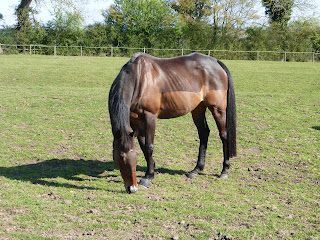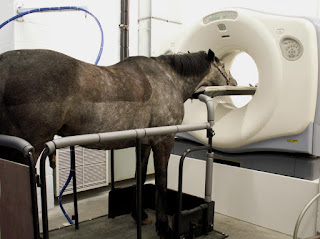It
is quite a long time since I wrote a blog just about Tommy but things have
really been happening in the last few weeks so I thought I would share!
Over
the last few weeks he has been coming over to me in the field and I have been giving
him a polo and a pat. This was only
something I could do if he was near to the gate before.
Then
a couple of weeks ago he came up to me whilst I was poo picking and started
nudging me and blowing in my hair :) He
does that if I skip out his stable when he is in there too!
In
the last 2 or 3 weeks he has been letting me stand closer to him in the field,
pat him, 'pull' his ears, scratch his forehead, check his legs and last week he
even let me put my arms around his neck and give him a cuddle.
Here
is a little video from the other weekend.....
He
is also now a bit of a star at being tied up, I haven't tied him up for the
farrier yet, but we are working towards that.
He
also had the bottom half of his tail washed a couple of weeks ago, he was so
brave. I was very careful with the hose
and didn't move it about too much, I had the water on quite slowly and tried
not to get the hose or water on his legs but he was brilliant.
When
you think that these were my aims when he arrived in July 2015 you can see how
far he has come ...
1.
Get Tommy to come up to the gate
for breakfast.
2.
Eat a treat from my hand.
3.
Allow me to stroke his neck.
4.
Allow me to catch him.
5.
Allow me to lead him.
6.
To come into his stable for a
minute with the door open.
7.
To come into his stable for
breakfast with the door closed.
8.
To brush Tommy.
9.
To pick out his feet.
10.
To settle in the stable for the
day with the others.
I
now have an amazingly happy, relaxed and confident pony.
He
loves his stable and is really settled and relaxed in there. He totally knows the routine but is really
patient and well behaved (unlike Basil sometimes!). Tommy absolutely loves being brushed and
fussed over.
The
only thing which we are still working on is catching him in the main part of
the field if he is not wearing a headcollar.
This is a difficult thing to practise when he is out with the others
because Basil and Chesney come straight over if I go out and Tommy then gets
out of the way. In the evening he is
keen to come in and just follows the others.
So when I fence him off again in a few weeks to limit his grass I will
be able to start practising that.
Have you seen last week's video 'An Easter Treat and a Suprise' on my You Tube channel?
Horse Life and
Love. Please check it out and SUBSCRIBE.
You can also follow me on Facebook, Instagram
and Twitter for updates on Chesney, Basil, Tommy and Daisy.
Until next time!
Jo
































